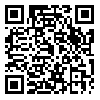Volume 5, Issue 18 (2012)
LCQ 2012, 5(18): 110-137 |
Back to browse issues page
Download citation:
BibTeX | RIS | EndNote | Medlars | ProCite | Reference Manager | RefWorks
Send citation to:



BibTeX | RIS | EndNote | Medlars | ProCite | Reference Manager | RefWorks
Send citation to:
ghorbanian M, akbari beyragh H. .Investigating the Narrative Time in Maroufi’s Peykar-e Farhad. LCQ 2012; 5 (18) :110-137
URL: http://lcq.modares.ac.ir/article-29-11566-en.html
URL: http://lcq.modares.ac.ir/article-29-11566-en.html
Abstract: (6202 Views)
One of the significant elements in the formation of narrative structure is the sequence of its events which is explored under the umbrella term of temporal element. Abbas Maroufi’s novel Peykar-e farhadis a work in which real and imaginative times are what narrative is based upon. The novelist relates, in the novel’s surface structure, one single story in three different temporal frames, yet breaks the narrative linearity, so that for the most part the existing relations and temporal order of events remain obscure and, consequently, time, losing its quantitative value, fades away in the narrative. The current paper attempts to survey the order of events and narrative temporality in addition to studying how the author, by deploying some features of stream of consciousness, has narrated the mental structure as well as confusion of the novel’s female character. These features range from temporal and spatial turbulence, free association, author’s textual removal, and assigning a role to the reader in narration act due to direct displaying of disturbed subjectivities as well as uncensored stream-of-consciousness memories—being the same as pre-lingual mental layers—to utilizing internal monologue and soliloquy in some parts of the story, poeticness, mental obscurity and difficulty of finding the decisively right meaning for the novel with the purpose of developing a particular narrative technique.
Keywords: Stream of Consciousness, anachronism, modern Iranian novel, Peykar-e farhad, Abbas Maroufi
Received: 2011/04/28 | Accepted: 2012/08/8 | Published: 2012/08/10
| Rights and permissions | |
 |
This work is licensed under a Creative Commons Attribution-NonCommercial 4.0 International License. |








